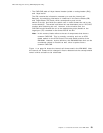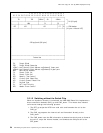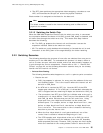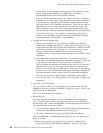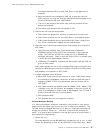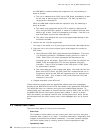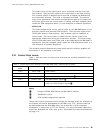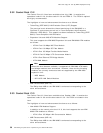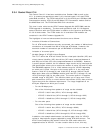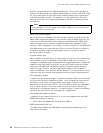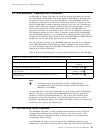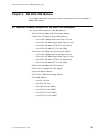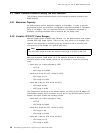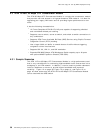This soft copy for use by IBM employees only.
3.3.4 Control Point V1.4
The Control Point V1.4 has been available since October 1996 as well as the
V1.3. It contains the operational code V1.4.0, the boot code V1.4.0 and FPGA
code 0B40 and 0C10. The FPGA code 0C10 is for the ATM 3-port 155 Mbps LAN
Concentration module, ATM 12-port 25 Mbps UTP Concentrator module and for
the 8285 Base Unit. The FPGA code 0B40 is for the others.
This level is also called as the ATM Firmware Upgrade Kit (MES 5099) and the
FPGA upgrade is mandatory. The boot and operational code V1.4.0 supports
several functions with new FPGA codes in addition to the functions provided by
V1.3.0 of those codes. The FPGA codes for all available ATM modules are
contained in the ATM Firmware Upgrade Kit.
The highlights of new and enhancement functions are as follows:
•
Increase of Number of Connections
For all ATM media modules currently announced, the number of bidirectional
connections is increased from 992 to 4,064 per ATM blade. However, the
maximum number of connections per an IBM 8285 is 2,048 due to the
limitation of its control point.
•
Variable Range of VPI/VCI Values Support
The ITU-T define the ATM cell format and the virtual path identifier (VPI) and
virtual channel identifier (VCI) have 8 bits (VPI value comprised between 0
and 256) and 16 bits (VCI value comprised between 0 and 65536). However,
in actual campus network, the full address range should not be used and the
UNI specification allows you to restrict the number of active VPI and VCI bits.
The IBM 8285 supports a 14 or 12-bit address range for VPI/VCI depending
on which port is used. And prior to the control point V1.3, the range was
fixed to a 2-bit VPI (0 through 3) and 10-bit VCI (0 through 1023) for the 25
Mbps ports (base unit and 25Mbps module) and 4-bit VPI (0 through 15) and
10-bit (0 through 1023) for the other ports. The control point V1.4 supports
variable range of VPC/VCC. This function allows you to have more virtual
path connections (VPCs) or virtual channel connections (VCCs) than previous
levels along with the customer requirement. The range supported on an
ATM port depends on which port is used.
− For the 25 Mbps ports:
One of the following three patterns of range can be selected:
- VPI/VCI: 0 bit/12 bits (VPI=0, VCI=0 through 4095)
- VPI/VCI: 2 bits/10 bits (VPI=0 through 3, VCI=0 through 1023)
- VPI/VCI: 4 bits/8 bits (VPI=0 through 15, VCI=0 through 256)
− For the other ports:
One of the following three patterns of range can be selected:
- VPI/VCI: 0 bit/14 bits (VPI=0, VCI=0 through 16383)
- VPI/VCI: 4 bits/10 bits (VPI=0 through 15, VCI=0 through 1023)
- VPI/VCI: 6 bits/8 bits (VPI=0 through 63, VCI=0 through 256)
In addition, the network administrator can define upper limits for VPI/VCI
values to meet specific ranges supported by some ATM UNI devices. The
ATM Forum-Compliant UNI stations inform the ATM switch about the
supported values of VPI/VCI. In case a station fails to do so, this may
Chapter 3. Functional Overview of the IBM 8285 31



